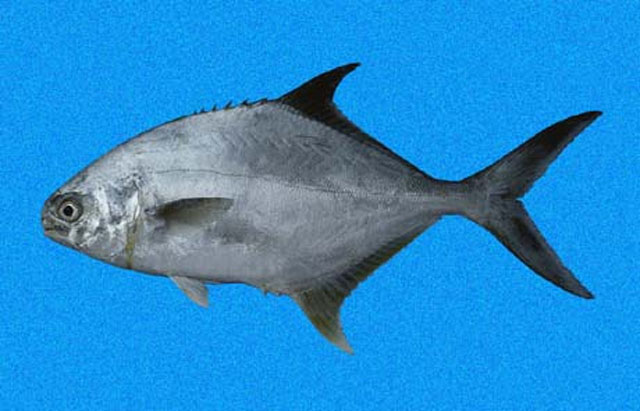| Carangidae (Jacks and pompanos), subfamily: Trachinotinae |
| 51 cm TL (male/unsexed) |
|
benthopelagic |
| Eastern Pacific: Redondo Beach in southern California, USA to Peru, including the Galapagos Islands. |
|
Body deep (less so with age) and strongly compressed; mouth small; jaw teeth small, villiform, and only slightly hooked, disappearing with age; lower branch of first gill arch with 8 to 10 gill rakers; dorsal fin with 6 spines followed by another spine and 24 to 27 soft rays (VI+I, 24-27); upper third of body dark; belly white; flanks with golden highlights; no distinctive marks (Ref. 55763). |
| Adults are found in coastal waters, usually forming schools in shallow inshore sandy areas (Ref. 9283). They feed on mollusks, crustaceans, other invertebrates and small fishes (Ref. 9283). Excellent for human consumption. |
|
(Ref. 96402)
|
| harmless |
|
Source and more info: www.fishbase.org. For personal, classroom, and other internal use only. Not for publication.
Page created by Jen, 05.08.02,
php script by kbanasihan 06/09/2010 ,
last modified by
dsantos, 20/08/10

